(A word of warning: this post is LONG. Seriously.)
In 1999, the Disney Renaissance came to an end, overlapping somewhat conspicuously with the beginning of an eleven-year-long princess drought. Some might argue that the drought began long before this point, as Pocahontas and Mulan are not technically princesses, but we beg to differ. So, too, does Disney.
Membership in the official princess lineup is less a matter of royal birth or marriage than of royal profits; princesses are a cash cow from which Disney annually milks about four billion dollars. During his time at Paramount, the future Disney CEO, Michael Eisner, stated, “We have no obligation to make history. We have no obligation to make art. We have no obligation to make a statement. To make money is our only objective.” Hence the creation of the Disney princess franchise in 2000, the inclusion of two not-actually princesses in the official lineup, and the resurrection of the brand in 2009 with the aptly named The Princess and the Frog.
What sets these princesses apart is the fact that they are set apart. In much of the merchandise featuring multiple characters, they are relegated to the background. Like, the very back. The very, very back. In addition, they represent departures from the white, European protagonists that had previously defined the brand and, in many ways, still do.
Pocahontas
Pocahontas
is a film about differing viewpoints, so it makes sense that our
feelings about its heroine are tremendously conflicted. What prevents
Pocahontas from earning the designation of actual strong female
character is Pocahontas itself.
First,
we need to discuss Pocahontas the historical figure. Wikipedia tells us
that she was born sometime around 1595, the daughter of Powhatan, the
chief of a network of tribal nations in the Tidewater region of
Virginia. Her mother’s identity is unknown, but she was one of dozens of
wives taken by Powhatan. Pocahontas was not a princess in the context
of Powhatan culture – while she was her father’s favourite, she was not
in line to inherit anything. In 1607, John Smith was captured by a
hunting party and saved from execution by Pocahontas when she placed her
head on his as her father raised his war club to bludgeon Smith. Aside
from this well-known historical anecdote, it seems that Pocahontas had
little interaction with Smith. However, she was known to visit Jamestown
with provisions, where she would play games with the colonists. In 1609
Smith was injured by a gunpowder explosion and returned to England.
Pocahontas was told he had died. Sometime before 1612, Pocahontas
married a common warrior named Kocoum, but the marriage likely ended
when she was captured by the English and held for ransom in 1613 as part
of the First Anglo-Powhatan War. While being held captive, she
converted to Christianity and took the name Rebecca. When the
opportunity to return home arose, Pocahontas/Rebecca chose to stay with
the English. In 1614 she married John Rolfe, a tobacco cultivator, and
bore him a son the next year. In 1616 John and Pocahontas travelled to
London, where Pocahontas was presented to the English public as a
princess by the Virginia Company. She became a minor celebrity and was
celebrated at fetes and masques. In March 1617 the Rolfes tried to
return to Virginia, but Pocahontas became gravely ill when they had only
gone as far as Gravesend on the Thames. She died there of unknown
causes. Prime Disney material, obviously.
Before the film becomes Disney’s slightly lighter take on West Side Story,
its protagonist is much more than a Maria. We are first introduced to
Pocahontas through her absence, like Ariel; instead of remaining in the
village to greet her recently returned father, she is high on a cliff,
contemplating a potentially prophetic dream. When her friend calls her
down, she leaps from the peak and dives into the water, demonstrating
her athleticism, courage, and penchant for showing off. Returning to her
village, she learns that she is to marry Kocoum, a man too serious for a
trickster like herself. She is a force of nature (almost literally, as
her mother has become a kind of wind spirit), and she resents the weight
of her impending marriage tying her down.
As
always, Pocahontas expresses her conflict in an “I Want” song, itself a
song born from conflict. Her father, Powhatan, urges her to settle
down, using her beloved nature as support: “As the river cuts his path/
Though the river’s proud and strong/ He will choose the smoothest
course/ That’s why rivers live so long/ They’re steady as the beating
drum.” Pocahontas, however, sees the river as an ever-changing entity,
and seeks to follow its example as she waits for the change which she
feels is approaching. It is only in the final verse that the river takes
on the significance not only of a life path, but of a specifically
romantic one. The change is no longer something, but someone: a mysterious Dream Giver who might enable her to avoid the unutterably boring fate of life with Kocoum.
Of course, second and third and now seventh verse, same as the first -- it’s a guy. Not only is it a guy, it is the guy
(which becomes somewhat awkward, seeing as she marries someone else in
the sequel). Pocahontas meets John Smith, who we know is meant for her
due to their mutual interest in exploration and longing gazes, and the
most contrived plot device of all time allows them to turn these gazes
into words. Pocahontas “listens with her heart” and suddenly speaks
perfect English, which admittedly allows her to avoid the appearance of
ignorance which so often afflicts Disney princesses, but also strains
credibility, to put it mildly. In explaining her world to John Smith,
she again demonstrates her ability to understand different perspectives,
making her, as the film later demonstrates, the perfect person to
prevent war. It’s only too bad that every time she and John Smith list a
number of completely valid reasons for maintaining peace, the one they
constantly return to is that war would get in the way of their
relationship. This -- and Nakoma’s inability to be as awesome as Anita
-- is why Pocahontas is nowhere near as effective as West Side Story;
whereas the latter uses the love story in service of its intended
themes, the former uses issues of racism and colonialism in order to
bolster its love story.
This
is also ultimately the problem with Pocahontas as a character: her
selfhood is defined by her romantic relationship, and all of her actions
from the time she meets John Smith revolve around him. She secures
peace by saving John Smith’s life, countering hatred with love. Their
love song, entitled “If I Never Knew You,” not only revolves around the
concept that life gained meaning when they met, but actually suggests
that they could not become their full selves without this contact: “And
if I never held you/ I would never have a clue/ How at last I'd find in
you/ The missing part of me.” It’s as if Pocahontas, who starts out as a
genuinely compelling character, must be forced into the Disney princess
mould with the Heteronormative Hammer of Blandness, losing all of her
sheen in the process.
Verdict: Strong Female Character™
Mulan
Mulan
represents the pinnacle of the Disney princess’s development, not
because she is the best example of the brand’s spirit -- in many ways
she’s actually the worst -- but because she is the most complex
character.
Hua Mulan is a legendary figure from China, originally described in The Ballad of Mulan.
While the historical setting is uncertain, early accounts of the legend
state that Mulan lived during the Northern Wei dynasty (386-534). The Ballad of Mulan
was first transcribed in the 6th century, the text of the poem as we
know it comes from an anthology compiled in the 11th or 12th century,
and the story was expanded into a novel in the late Ming dynasty
(1368-1644). In the ballad, Mulan leaves her family, buys a horse and
saddle, and disguises herself as a man to take her father’s place in the
army. She goes on to ride ten thousand miles in war, crossing mountains
and passes and fighting for ten years. At the end of this decade, the
surviving warriors return to see the Emperor, where they are celebrated
and offered great rewards. Mulan refuses a position as an official and
instead asks for a camel to carry her home. When she returns home she is
welcomed by her parents, her elder sister, and her younger brother. She
then removes her armor, dons her “old-time clothes,” puts on makeup,
and steps out to surprise her comrades-in-arms with the fact that
“[they] travelled twelve years together. yet didn’t realize Mulan was a
lady!”
We
are introduced to Disney’s Mulan in much the same way as we were
introduced to Belle: as a person destined to achieve a nearly impossible
feat. However, whereas Belle’s task was to learn to love that which
seems unlovable, Mulan’s is to save an empire. She is framed as a hero
from the outset, although it is quite clear that she has a long way to
go before she can fully realize her potential. The first time we see
Mulan, she is eating breakfast while cramming for a test on which she’s
planning to cheat. She will be quizzed on the proper attributes of a
woman -- “Quiet and demure, graceful, polite, delicate, refined, poised,
punctual” -- and we know even before seeing her disastrous test
performance that she is going to fail epically. She possesses none of
these traits; she is, instead, clumsy, perpetually tardy, and unwilling
to submit to the authority of others when she knows that they are wrong.
Compounding
her trouble is the fact that she possesses the stereotypically
masculine trait of rational, strategic thinking. She builds a
contraption that allows her dog to do her chores for her, makes the
winning move in a game of strategy after looking at the board for a mere
three seconds, discovers the tricks to playing Arrow-Pole, the world’s
worst game, and singlehandedly defeats an army with a judiciously aimed
cannon. Like Sherlock Holmes, Batman, and the whole set of damaged, male
geniuses that populate our television screens, Mulan is very much the
smartest guy in the room.
Pocahontas
has to choose between two paths; for Mulan, no choice seems to exist.
The perpetuation of traditional gender roles is figured through the
language of honour. A person must bring honour to their family and their
emperor by adhering to these roles. As stated in “Bring Honour to Us
All,” men accomplish this task by bearing arms, women by bearing sons.
Because the matchmaker deems her unworthy of the latter and her gender
precludes her from the former, Mulan is not just restricted by social
roles, but nearly defeated by them. So she finds a loophole in a pair of
pants.
This
raises the question: can a strong female character masquerade as a man
without entering Strong Female Character territory? Does her strength
derive from the sword in her hand or the one her outfit suggests lies
between her legs? (I swear we are going somewhere with these jokes.)
Although Mulan does take out the Huns as Ping, she saves the emperor and
China very deliberately as herself.
What
truly sets Mulan apart from the other princesses is this very self. In
her most troubled times, Mulan must confront her self, in the form of
myriad reflections. The feminine standard she cannot hope to achieve is
reflected in the other young women going to meet the matchmaker, each
appearing as a slightly altered, perfectly conforming version of Mulan.
When she sings the aptly named “Reflection,” she reveals the angst she
feels about her own identity, never able to repress her self enough to
live up to societal standards. These reflections disappear when she
becomes Ping, only to return at the defining moment for her character.
Revealed to be a woman, Mulan looks at her image reflected in her
helmet, and considers the real reason she assumed a false identity:
“Maybe I didn’t go for my father. Maybe what I really wanted was to
prove I could do things right, so when I looked in the mirror, I’d see
someone worthwhile.” In that moment, she becomes the most nuanced and,
arguably, the best character in the Disney princess line up to that
point.
Although
Mulan saves China with style, she truly wins our hearts by keeping
matters of the heart in the background. Her moment of accomplishment
comes not from the confirmation of Li Shang’s romantic attention but
from her father’s recognition of her value: “The greatest gift and
honour is having you for a daughter.” The only kiss in the film comes
when Mulan kisses Mushu on the head: this is not True Love’s Kiss, but
rather True Friendship’s Appreciative Peck.
Verdict: Actual Strong Female Character
Tiana
In
2009, Disney revived the princess for the second time, unfortunately
electing not to revive the idea of a storyline that does not revolve
around romance.
The
problem with Tiana, and with the film as a whole, is that Disney tried
to make her both a criticism of the Disney princess and a shining
example of the brand. Tiana is introduced as a skeptic who, even as a
child, resists the pull to believe in things like frog princes and fairy
tales. Instead she values hard work and, well, very little else. She
plans every detail of her life, and every detail just happens to involve
the restaurant which she hopes to own. Her “I Want” song, “Almost
There,” isn’t a call for freedom, but a specific course of action with
an already determined endpoint. Taking up her dead father’s dream, she
wants to run a restaurant that will bring people together, all while
ignoring the people in her life. It’s unfortunate, because while her
tenacity and dedication to see her dream through
are commendable (“Fairytales can come true, you gotta make 'em happen,
it all depends on you"), Disney puts tremendous emphasis on the negative
consequences of her dedication.
Whereas Pocahontas gave us conflicted feelings, The Princess and the Frog
seems to have inspired the same in the Disney writers. The entire film
revolves around Disney’s most problematic message: every wish comes
true, just so long as you believe. The problem is that no one seems to
have decided whether the film was intended to support or debunk this
idea. During the first act, Tiana and Lottie represent opposing
viewpoints, the former portrayed as the level-headed non-believer who
proudly asserts that she would never kiss a frog, and the latter
depicted as a caricature of an unhinged Disney fangirl, desperately
wishing on a star and willing to “kiss a hundred frogs to find and marry
a prince and be a princess.” So, for the first act at least, Disney
takes itself to task. Even Tiana’s perfect father warns her that wishes
are no substitute for actions: “You wish and you dream with all your
little heart, but you remember, Tiana, that that old star can only take
you part of the way. You gotta help it along with some hard work of your
own, and then you can do anything you set your mind to.”
Then,
as always, it all goes to hell the moment the guy shows up. Not the
very first moment, mind you, because Tiana and Naveen’s first contact is
a non-event. However, their second meeting occurs when Tiana wishes on a
star for her restaurant and gets a newly froggy Naveen instead. From
this point on, the film both demonizes professional accomplishment and
champions romantic fulfillment, the latter described on several
occasions as “what’s really important.” Tiana’s admirable ambition is
overshadowed by the alienation brought on by her tunnel vision, while
Naveen’s actual problem of being an utterly useless leech is nowhere
near as thoroughly problematized. Indeed, the film is so taken with his
character that it quite literally switches to his point-of-view when he
experiences the first signs of actual development. When they meet Mama
Odie, she encourages them to “dig a little deeper.” For Naveen, this
translates to “All you need is some self-control” and “Maybe love will
grant you peace of mind.” For Tiana, however, the only conclusion
appears to be that she needs to fall in love and have a family, like her
father did.
And
this is the conclusion the film ultimately supports. Given the
opportunity to have her restaurant (through evil machinations, but, you
know), she argues that her father “never did get what he wanted, but he
had what he needed. He had love! He never lost sight of what was really
important, and neither will I!” After that, the restaurant which should
have been a happy ending all on its own becomes a mere by-product of a
happily-ever-after romance. Her greatest dream is reduced to a montage
before the credits roll. Her marriage, not her restaurant, is treated as
the realization of her dreams, especially as it magically restores both
Tiana and Naveen to human form. In this sense, her wedding actually
allows her to have her restaurant.
Verdict: Strong Female Character™
Conclusion
In
all cases, these characters seem warped to fit the Disney princess
model. Pocahontas prevents a war because the guy she fell for the first
time she saw him is in danger. Mulan has a strange romantic subplot in a
story about discovering one’s own value independent of others’
expectations. Tiana’s hard work is devalued in favour of a model that
prioritizes love, and romantic love in particular, over professional
fulfillment.
At
the same time, these characters have managed to re-define the concept
of the Disney princess, expanding it to include not only a wider variety
of cultures, but a more comprehensive conceptualization of what it
means to be a princess. Like a Holmesian intellect, a real work ethic,
and the guts to jump off a ridiculously high cliff.
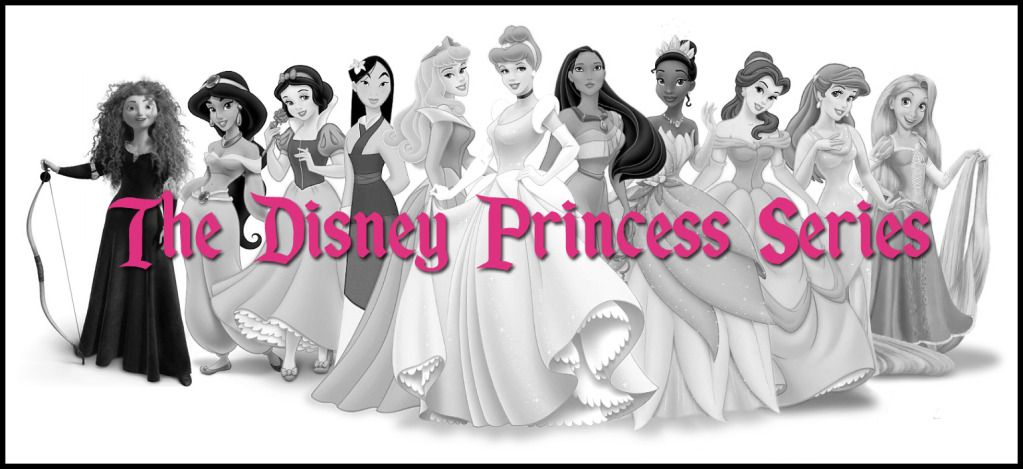
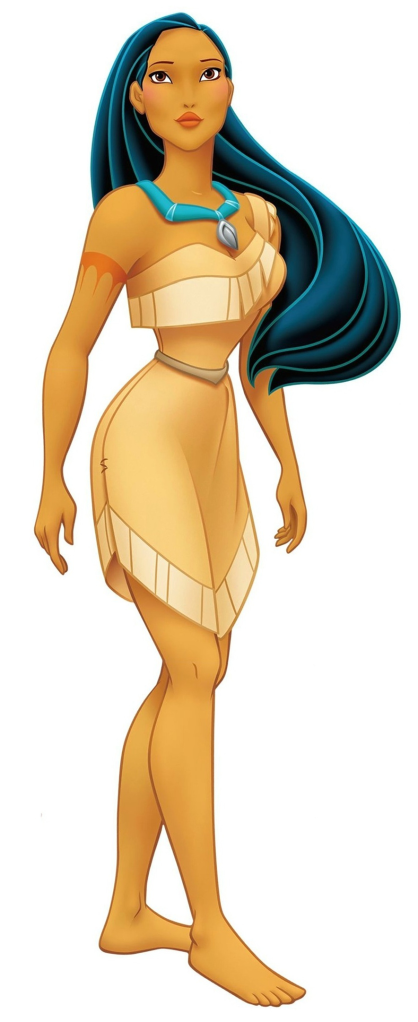

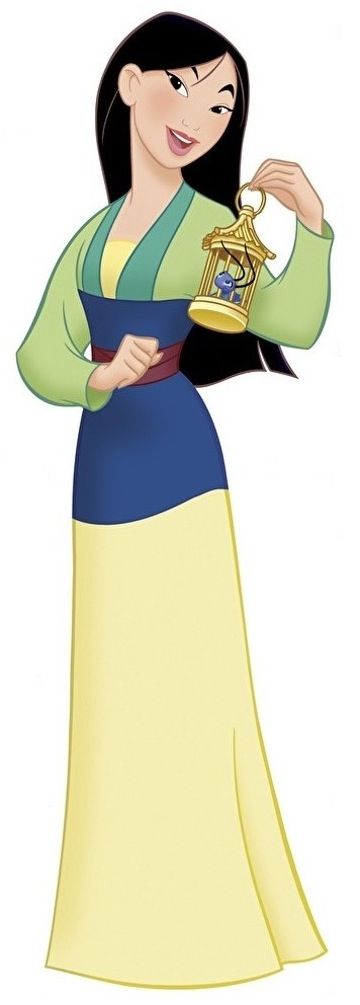
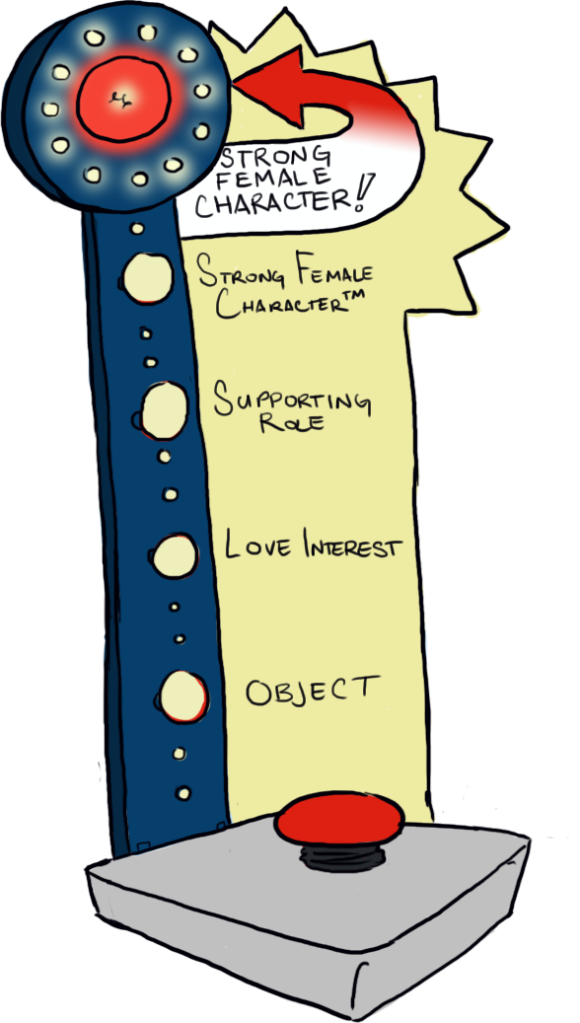
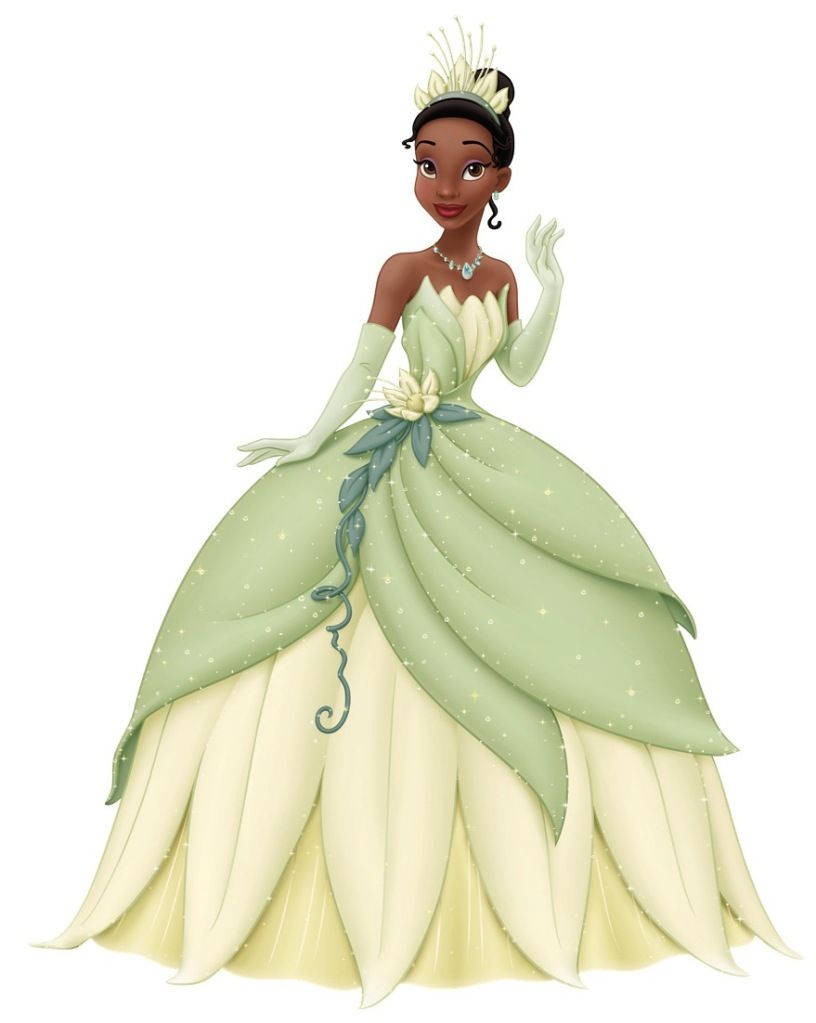
I took issue with the post on Frozen, but this one feels right on target. I'm glad I'm not the only one who felt PatF had major issues. I also disliked the way it glorified Tiana being a workaholic. Naveen was a really interesting character, but this and Tangled had an uncomfortable focus on the male leads rather than the women they were supposed to focus on.
ReplyDelete